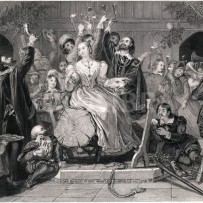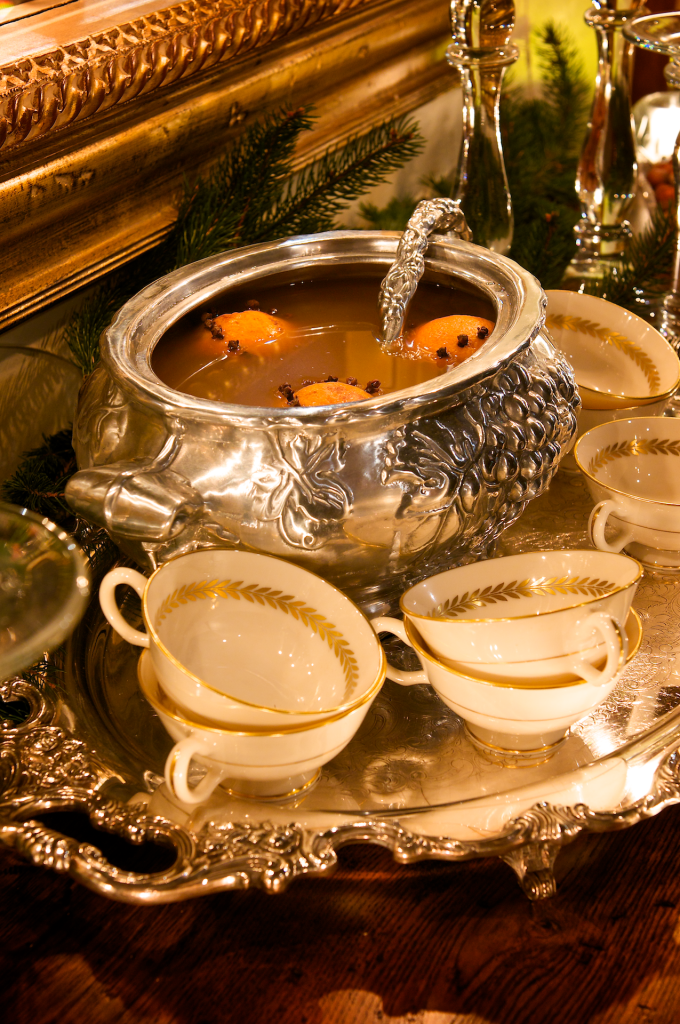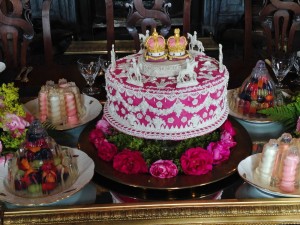12 Days of Yule – History & Traditions of Twelfth Night – Mother’s Night

In Old England, the Twelfth Night marked the end of a winter festival that started on Samhain, October 31st. The Lord of Misrule symbolizes the world turning upside down with the coming of a cold winter. In the middle ages, the Twelfth Night began on the eve of December 25th moving forward 12 days to January 6th, hence the name the Twelve Days of Christmas, in Christian religious practice. But traditionally the Twelve Days of Yule for pagans, celts and heathens all around the world begins on Mother’s Night, Yule’s eve, December 20th, moving forward 12 days with the Twelfth Night ending on December 31st.
The Twelfth Night festival marked the onset of the winter solstice, the point in late December when the sun, whose daily arc had reached its lowest, darkest, coldest point, began it’s rise toward the longer, warmer days and the coming of spring. The ceremonial Yule Log, preferably oak, burned to bring prosperity, abundance and luck in the coming year, was hauled in to start the hearth fire around which its visitors would gather throughout the rest of the Yuletide season. Families would venture out into the woods in search of a grand oak tree. The tree was cut then hauled to the hearth. Individual households continued to feed their Yule fires, as well, a Yule fire would be found burning in the middle of town. The townspeople worked together to keep the Yule fire stoked throughout the entire Twelve Days of Yule. The town fire was the perfect place to gather together in spirit of the season.
Twelfth Night was the final frenzy of feasting, drinking and merry making before the townspeople returned to daily life for the remainder of winter. A grand cake was the focus of the celebratory feast as well as Wassail, the drink of good wishes and holiday cheer. The ale-based drink seasoned with spices, fruits, sugars and honey was served in huge silver or pewter bowls. The punch was passed amongst family members and friends with the greeting “Wassail”, the Old English term meaning, “be well.”
A great feast was prepared, a testament to the happy celebrations of the season. An Old England tradition dating back to the Middle Ages is the Twelfth Night Cake or “King Cake”. The King Cake was a grand cake and the focal point of the festivities on the Epiphany, the final day of the Yuletide season, Twelfth Night. Into the cake was baked a dried bean and a pea, one in one half and the other in the other half. The cake was decorated with sugar, like icing, a kind of Marzipan, and filled with candied fruits and spices much like our modern day Fruit Cake, but not so dense. The cakes would sometimes be decorated with ornamentation and some folks even made a paper cutout crown that wrapped around the cake. As the visitors arrived, they were given a piece of the cake, ladies from the left, and gentlemen from the right. Whoever got the bean became King of the Revels for the night, and everyone in attendance had to do as he said for the rest of the evening. The lady who got the pea was his Queen for the evening. These mock monarchs are clearly the descendants of the Medieval King of Misrule, their task being to ensure frivolity throughout the night with ridiculous demands that everyone had to obey.
Although throughout the centuries, the history, traditions and recipes of this celebratory “Twelfth Cake” or King Cake have changed, some of us still celebrate the Yuletide Season in this fashion and embrace the traditions and celebrations of the old world. Here’s a photo of an beautiful King Cake upon a traditional Twelfth Night buffet.
The Winter Solstice. The coming of Yule. Celebrates the shortest day and the longest night. When the sun returns, born from the dark and nourishing womb of the Great Goddess. As the Oak King regains his rule, defeating the Holly King once more, we kindle the light of hope. For light is returning and with it, new life and new beginnings
Perhaps you are familiar with William Shakespeare’s play, Twelfth Night? Another source from which I drew inspiration when I created my “Twelfth Night” holiday offerings. Twelfth Night Yule offerings include Twelfth Night Candles and ritual candles, our famous KING CAKE Candles (complete with bean), Wassail Punch, Sacred Oils and Resins, Yule Incenses, Twelfth Night Casting Herbs for bonfires and more. You can find our Twelfth Night and other magical sabbat enchantments here: http://www.whitemagickalchemy.com
Step back into old world England. Embrace old world traditions. White Magick Alchemy’s original Twelfth Night magical offerings are crafted in the old world pagan tradition and are used by pagans and spiritualists worldwide. I invite you to step into the portal to and begin your magical journey!
Yuletide Blessings,
White Magick Alchemy, Food Channel






Recent Comments